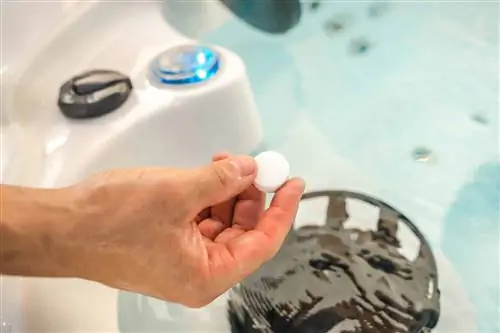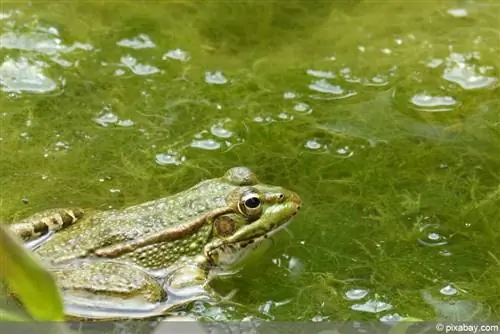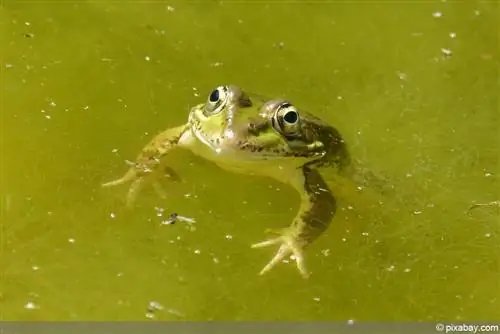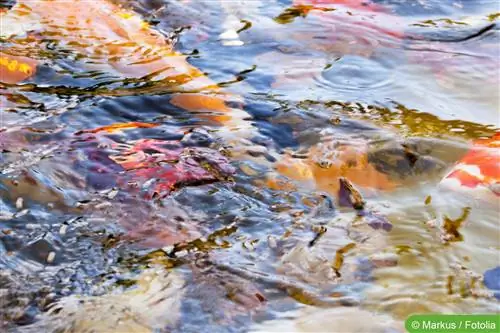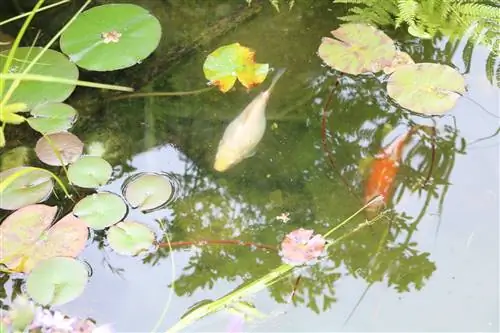- Author admin [email protected].
- Public 2023-12-17 03:39.
- Last modified 2025-01-24 12:45.
If the pool water becomes milky or even green, shock chlorination can help. This guide to shock chlorination shows how to proceed, what dangers exist and what additional considerations need to be taken into account.
Definition
During shock chlorination, a larger amount of chlorine is added to the water to kill germs and algae and thereby clarify it again.
Chlorine is part of general and basic pool care, but under certain circumstances the recommended dosage may not be sufficient. Shock chlorination then represents a way to make the pool safe to use again with little effort and without wasting water.
Reasons for use
Shock chlorination may be necessary for various reasons. These include, among others:
- intensive use of the pool
- very high temperatures
- strong sunlight
- insufficient filter performance
- increased dirt entry due to unfavorable location, storm or thunderstorm
- Contamination in the filter
- chlorine content too low
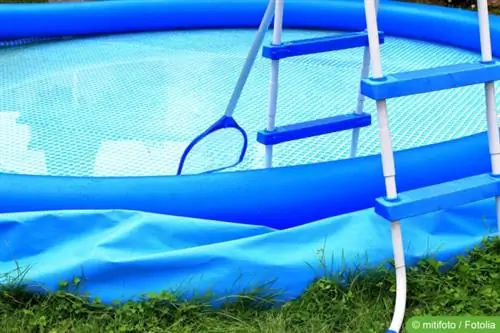
Shock chlorination is often necessary in midsummer when heat, constant use of the pool and contamination brought in by wind or thunderstorms come together.
Preparation
Before shock chlorination is carried out, appropriate preparation must be carried out. This includes the following points:
- Clean filter
- If necessary, replace cartridges
- remove coarse dirt with a landing net
- Clean pool walls and floor
This already achieves better effectiveness of the chlorine.
Time
The desired effect of chlorine decreases due to UV radiation. Shock chlorination should therefore take place in the evening. Alternatively, overcast days can be chosen or the pool can be covered.
Note:
If a pool filter has a UV element, this must first be switched off.
Medium
Various means can be used for shock chlorination of the pool with green water. It is important that the products are approved for pool water care.
In stores you can find:
- Chlorine granules
- Chlorine tablets
- liquid chlorine
Chlorine granules have the advantage that they have a high concentration, can be dosed precisely and dissolve quickly.
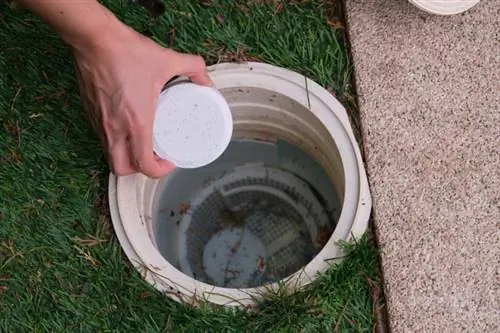
Just like chlorine in the form of tablets, it is practical to use and saves space. Unlike liquid chlorine, however, it must be dissolved beforehand, so requires some preparation.
Perform shock chlorination
When the preparatory cleaning of the pool and pump is completed, the actual shock chlorination takes place. The following steps are necessary:
- Calculate the required amount of chlorine.
- Dissolve chlorine granules or crush chlorine tablets and dissolve in water.
- Pour the solution into the skimmer.
- Let the pump run continuously.
Tip:
An even distribution of the chlorine is crucial for the desired effect. If the performance of the filter alone is not sufficient, the chlorine can be dissolved or added directly to the water in liquid form and distributed with a landing net. It is important to mix the water in circular movements for several minutes.
Dosage
When dosing the respective agent, the concentration is crucial. The information provided by the manufacturer is decisive here. As a rule, for effective and radical shock chlorination, there should be 20 grams of chlorine per cubic meter or 1,000 liters of water.

However, the products can differ significantly in terms of composition, so the manufacturer's information must be taken into account.
In addition, water analyzes can help to achieve the correct chlorine level in the water and, if necessary, to make additional additions.
Duration
The high amount of chlorine in the water must be reduced gradually. This process can be accelerated by sunlight. A high temperature also promotes degradation.
There is no general statement about the exact duration of shock chlorination. It usually lasts 24 to 72 hours.
During these one to three days, it is crucial to clean the filter several times. Germs and algae killed by the chlorine are deposited as contaminants in the individual components of the filter.
Repeat
In difficult cases, shock chlorination alone is not sufficient to completely clarify the water.
This is due to various reasons. These include:
- high temperatures
- strong sunlight
- inappropriate pH value
- inadequate distribution
- dose too low
Ideally, the water has a pH of 7.2 and a temperature of 18 to 20 degrees Celsius. Then chlorine works particularly quickly and efficiently. However, this is not possible in midsummer and when there is heavy pollution.
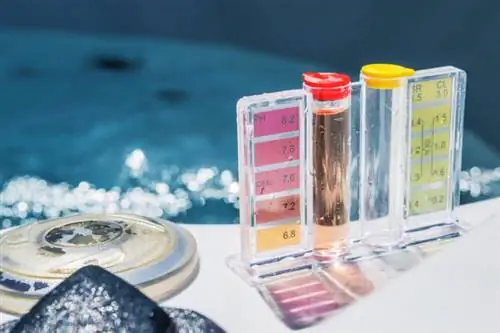
Accordingly, it is necessary to repeat the shock chlorination if necessary. However, if this is necessary every month, the basic maintenance of the pool should be reconsidered.
Dangers and problems
After shock chlorination, the pool cannot be used until the chlorine has fallen to a safe level. This can be determined by analyzing the water.
If you handle chlorine or water that contains a lot of chlorine carelessly and unsafely, the followingdifficulties can arise:
- Stress on the respiratory tract
- Skin Rashes
- Irritations of the skin and mucous membranes
- Eye irritation
- chemical burns
On the one hand, it is important not to have direct contact with it when using the chlorine preparation. Gloves and, if necessary, safety glasses when filling should be included. On the other hand, the pool may not be used immediately after shock chlorination.
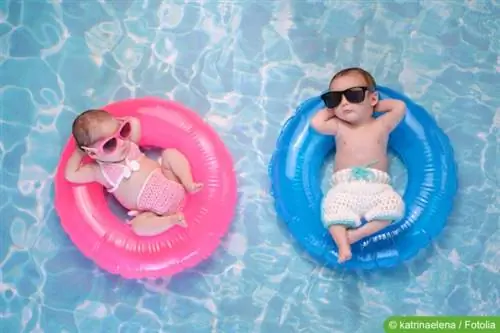
Another factor that is often not considered is the safety of the pool for the environment and wildlife. The pool must therefore be secured accordingly.
Frequently asked question
Shock chlorination is not working, what should I do?
If shock chlorination alone is not sufficient, a flocculant can also be applied. However, this measure only makes sense 18 hours after the spread of chlorine. Otherwise, a massive drop in water quality can occur. In addition, the filter must be cleaned several times during this time.
What should the pH value be for shock chlorination?
The ideal pH value is 7.2. If this is not present before the measure, an adjustment should be made. Otherwise the effect of shock chlorination is significantly reduced.
What water temperature is ideal for shock chlorination of green water?
The ideal temperature range is between 15 and 18 °C. Even with unheated pools, this is not always the case in midsummer. This makes appropriate general and consistent basic care and cleaning all the more important.

